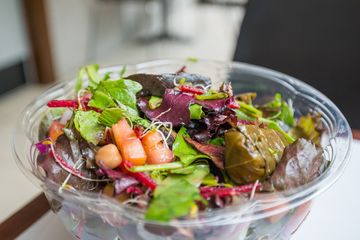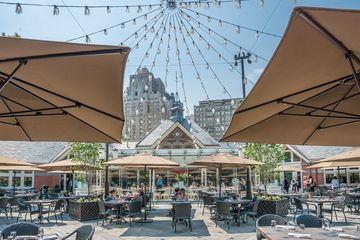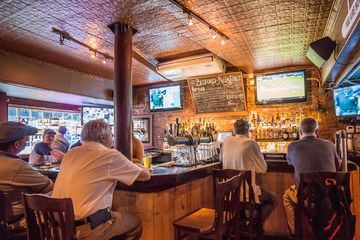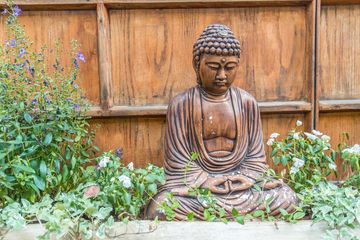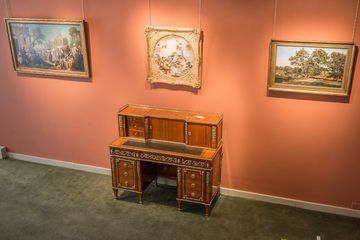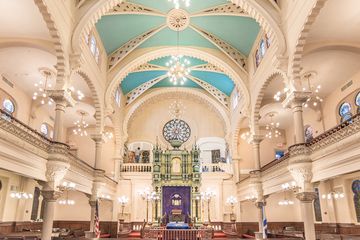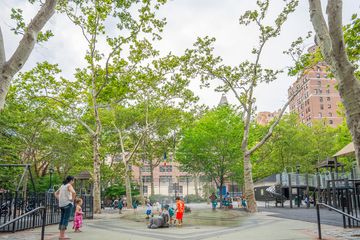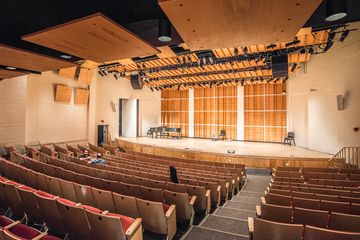Tavern on the Green, a restaurant that opened in 1934, has not forgotten its origins as a home to the ewes and rams that grazed in Sheep Meadow. Images of sheep are everywhere - carved into the fireplace, decorating the menu, holding up the table in the lobby. In 2010, the building ceased to be a restaurant for a brief stint, serving instead as a visitor's center and gift shop. After being taken over by partners, Jim Caiola and David Salama, and a lengthy renovation, the Tavern made a culinary return with a rustic and seasonal menu. I have eaten here on a number of occasions since its debut in the spring of 2014, but strolling in and out of the various rooms with members of the Manhattan Sideways team was a whole different experience. None had ever been, and I was amused and pleased with their reactions to this iconic Central Park locale. The Tavern contains three main areas. In the front dining room, the vast space resembles a summer hunting lodge. A large, circular bar takes up the center with a rotating carousel of gilded horses above it, and mammoth roof beams run along the ceiling like an old mead hall. Separated from the outdoors by a large glass wall, the second dining area is far more modern with creams, ivories and a collection of glass chandeliers. And though it was a hot day, a few brave souls ate outside in the exterior dining space, under umbrellas and large, mid-century street-lamps. The other side of the building features a beer garden with its own menu of simple bar fare. Finally, for the thousands of people who jog, bike or are simply wandering in the park, there is now a delightful little take-away window called "Green-to-Go. " It offers both a breakfast and lunch menu, and tables to sit down, relax and enjoy either a cup of coffee, a bowl of oatmeal, or a variety of wraps and salads in the afternoon. If nothing else, it is a terrific spot to watch both tourists and New Yorkers passing by.
